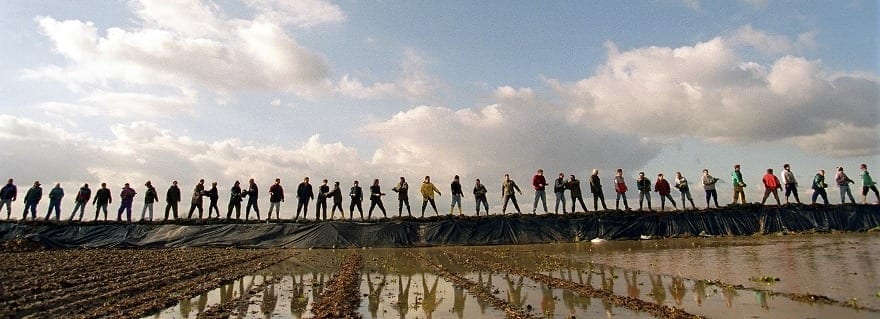
- Image via Wikipedia
USA-centric but world important
The thing I love most about America is that there’s always somebody who doesn’t get the word — somebody who doesn’t understand that in a Great Recession you’re supposed to hunker down, downsize and just hold on for dear life. I have a couple of friends who fit that bill, who think a recession is a dandy time to try to discover better and cheaper ways to do things. They both happen to be Indian-Americans — one a son of the Himalayas, who came to America on a scholarship and went to work for NASA to try to find a way to Mars; the other a son of New Delhi, who came here and found the Sun, Sun Microsystems. Both are serial innovators. Both are now shepherding clean-tech start-ups that have the potential to be disruptive game changers. They don’t know from hunkering down. They just didn’t get the word.
As a result, one has produced a fuel cell that can turn natural gas or natural grass into electricity; the other has a technology that might make coal the cleanest, cheapest energy source by turning its carbon-dioxide emissions into bricks to build your next house. Though our country may be flagging, it’s because of innovators like these that you should never — ever — write us off.
Let me introduce Vinod Khosla and K.R. Sridhar. Khosla, the co-founder of Sun, set out several years ago to fund energy start-ups. His favorite baby right now is a company called Calera, which was begun with the Stanford Professor Brent Constantz, who was studying how corals use CO2 to produce their calcium carbonate bones.
If you combine CO2 with seawater, or any kind of briny water, you produce CaCO3, calcium carbonate. That is not only the stuff of corals. It is also the same white, pasty goop that appears on your shower head from hard (calcium-rich) water. At its demonstration plant near Santa Cruz, Calif., Calera has developed a process that takes CO2 emissions from a coal- or gas-fired power plant and sprays seawater into it and naturally converts most of the CO2 into calcium carbonate, which is then spray-dried into cement or shaped into little pellets that can be used as concrete aggregates for building walls or highways — instead of letting the CO2 emissions go into the atmosphere and produce climate change.
If this can scale, it would eliminate the need for expensive carbon-sequestration facilities planned to be built alongside coal-fired power plants — and it might actually make the heretofore specious notion of “clean coal” a possibility.
Related articles by Zemanta
- Calera and Novacem use concrete to capture CO2 (innovationtoronto.com)
- Vinod Khosla: In energy, ignore the experts (news.cnet.com)
- Putting ‘Green’ Technology Into Bricks (online.wsj.com)
- On the price of coal (economist.com)
- Making Cement The Way Coral Does It: Out Of Thin Air (fastcompany.com)
- A Breakthrough Technology for Converting Coal-Fired Power Plants to Hydrogen-Fired Steam-Generation (InnovationToronto.com)









